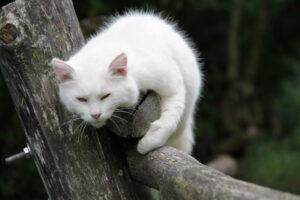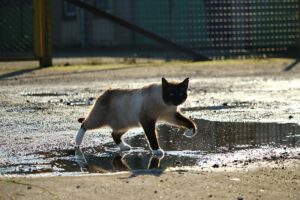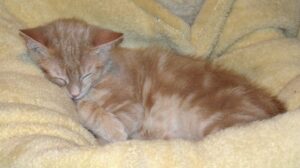How Can You Tell How Old A Cat Is ?
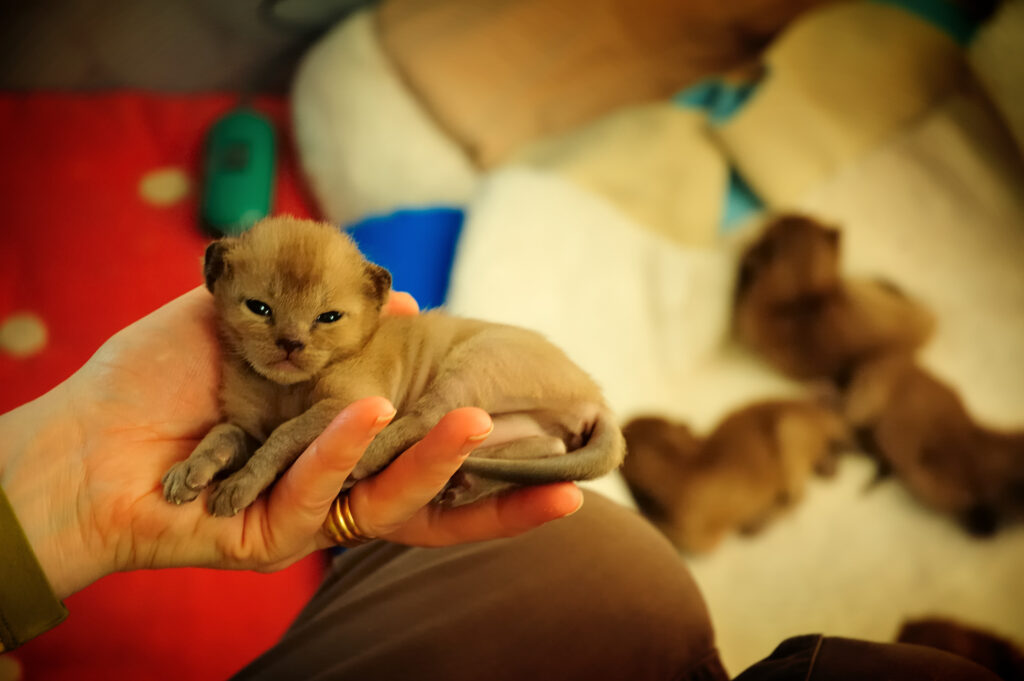
How Can You Tell How Old A Cat Is :- Cats, often perceived as ageless enigmas, undergo the aging process just like us. In situations where you’ve found or adopted a cat with an unknown history, determining their exact birthdate may remain elusive.
Nevertheless, even if a cat guards its age secretively, there are discernible signs of aging that provide valuable clues. Keep an eye out for these indicators to formulate a reasonable estimate of your cat’s age.
If you’ve welcomed a new feline into your home through adoption or rescue, unraveling the mystery of your cat’s age might be a puzzle. While the adage that one cat year equals seven human years is not entirely accurate, distinguishing between a kitten and an adult cat is a good start. However, this still leaves room for uncertainty.
For a more precise estimate, it’s advisable to turn to a reliable veterinarian. Veterinarians employ various methods, such as examining teeth, eyes, fur, and overall maturity, to gauge an approximate age for your cat. Keep in mind that while your vet can provide an educated guess, pinpointing an exact age remains challenging. Here are a few ways veterinarians use to assess your cat’s age.

How Can You Tell How Old A Cat Is ? Let’s begin with kittens.
How Can You Tell How Old A Cat Is ? Accurately determining the age of young kittens is facilitated by observing early developmental milestones:
- 1 Day Old: Ears folded, eyes closed, and kittens unable to stand.
- 3 Days Old: Ears begin to unfold.
- 6 Days Old: Eyes open slightly, ears fully open, but kittens cannot hear. Begin crawling.
- 10 – 15 Days Old: Eyes fully open, pupils do not dilate.
- 2 Weeks Old: Start walking, though wobbly and uncoordinated.
- 3 Weeks Old: Respond to sound as ear canals open, improved walking ability, use litter box, and baby teeth emerge.
- 4 – 5 Weeks Old: Initiate play, pouncing, roughhousing, and self-grooming.
- 6 Weeks Old: Eye color changes from blue to permanent color.
- 8 Weeks Old: Reach a weight of 2 lbs, suitable for spaying or neutering.
Resemble miniature versions of fully grown cats. Young ages provide more precise age indicators, similar to puppies.
How Can You Tell How Old A Cat Is ? How to Tell a Cat’s Age by Examining the Teeth
How Can You Tell How Old A Cat Is ? Estimating a cat’s age when the birthdate is unknown can be done with reasonable accuracy by examining its teeth. Kittens typically have no teeth at birth, but they usually have a full set by around four weeks. These initial teeth are temporary, much like baby teeth in humans, and are replaced by a permanent set around four months of age.
Beyond this stage, determining age becomes a bit more of a challenge. Factors like genetics, diet, and veterinary care influence dental health. Generally, a young cat under three years might exhibit a few yellow stains on mostly white teeth. If tartar is present on all or most teeth, the cat may be around five years old. Heavy yellow or brown staining, along with missing teeth, often indicates a senior cat. If uncertainty persists, consulting with your veterinarian can provide additional insights into your cat’s age.
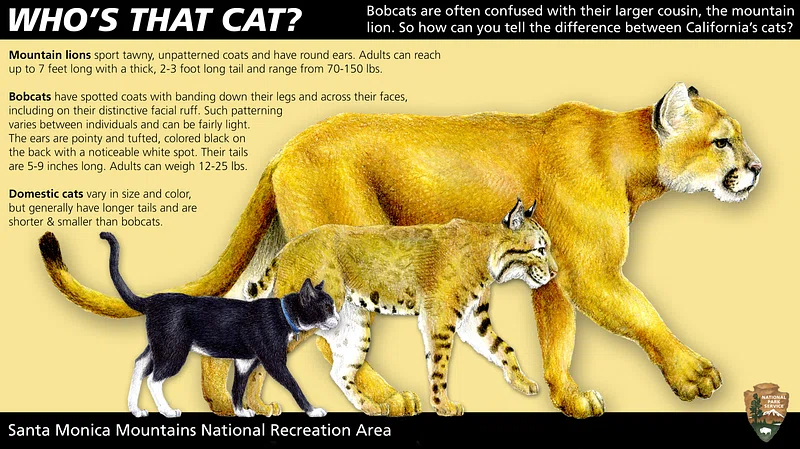
6 Ways To Tell Your Cat’s Age
Inspect Their Teeth
How Can You Tell How Old A Cat Is ? When unraveling the age mystery of your cat, the Cat Care Clinic suggests the first clue lies in your cat’s teeth. Evaluating their dental condition can offer insights into whether your feline friend is a young cat, in their middle years, or a senior.
If your cat still sports baby teeth, it’s a clear sign of kittenhood. Conversely, significant tartar buildup, dental calculus, or signs of periodontal disease can indicate an older age. Judging age based solely on teeth becomes challenging after a cat reaches about 2 years old. Some cats naturally resist dental issues, maintaining pristine teeth well into adulthood.
For an at-home assessment, an up-close inspection and even a whiff of your cat’s breath. Dental disease often goes unnoticed until it requires significant care. Lift your cat’s lip and observe for redness, inflammation, or any deviations from pearly whites. If such signs are present, your cat may be older, and a visit to the vet for dental cleaning is in order. It’s also an opportune time to initiate a tooth-brushing routine with your feline companion.
Consider Their Coat
A cat’s coat can undergo changes based on age, influenced by factors such as the texture of the fur and grooming habits. The Cat Care Clinic notes that cats may experience a coarsening of their fur as they age. Additionally, senior cats might encounter difficulties in grooming, leading to matting and an overall unkempt appearance.
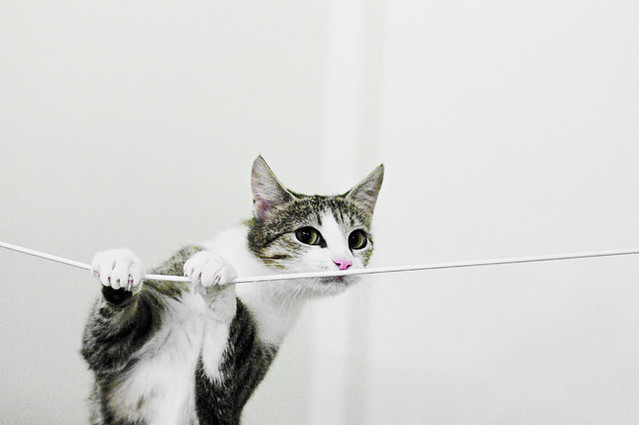
However, just like with teeth, assessing a cat’s age solely based on their coat has its limitations. Older cats may not groom as effectively, resulting in matting, but a young stray cat could also exhibit a disheveled appearance.
For an at-home assessment, while there isn’t a specific age when a cat’s coat turns coarse, if your cat’s fur feels less soft than typical, it could indicate they are at least six months old. Around this age, cats go through puberty and develop their adult coat, which may be coarser than their kitten fur. If grooming challenges are noticed, particularly in senior cats, consulting your veterinarian is recommended for guidance on maintaining their cleanliness and comfort.
Look Into Their Eyes
As cats age, changes in their eyes can signal the passage of time, specifically in the lens. Although cataracts are infrequent in cats, Noticeable indication of age in their eyes is the presence of lenticular sclerosis or nuclear sclerosis, characterized by a grayness or dullness in the lens.
For an at-home assessment, scrutinize your cat’s eyes for any signs of cloudiness or grayness. The presence of these changes suggests that your cat is likely an older adult or senior. Monitoring such ocular alterations can provide valuable insights into your cat’s age range.
Assess their Musculature
While cats of any age can exhibit well-muscled physiques, significant muscle wasting, particularly over the spine or rear legs, can be indicative of a senior cat.A skinny, sunken-in appearance is often associated with aging in cats.

For an at-home assessment, pay attention to any noticeable sunken-in appearance in your cat. Additionally, keep a watchful eye on their drinking and litter box habits. If you observe increased thirst or urination, it may signal underlying conditions such as kidney disease or other health issues that require attention. Monitoring these physical changes and habits can aid in gauging your cat’s age and overall well-being.
Consider Their Breed
How Can You Tell How Old A Cat Is ? The lifespan of your cat and the rate at which they age can be influenced by their breed. Generally, purebred cats may not live as long as their non-purebred counterparts, often attributed to a narrower genetic pool and a predisposition to specific illnesses and medical conditions, A veterinarian however, it’s essential to consider this information with flexibility, as many purebred cats defy these expectations, living well into their late teens or even reaching the age of 20. Nevertheless, mixed-breed cats are generally more likely to enjoy longer lives.

For an at-home assessment, recognizing that purebred cats might have shorter lives can aid in understanding the potential for more rapid aging. If your purebred cat displays signs of aging, they might be a year or two younger than anticipated. It’s crucial to note that breed alone isn’t the sole factor influencing rapid aging. Cats prone to anxiety and stress may also age more quickly due to the impact of cortisol on their bodies.
Think About Their Trainability
While cats of any age generally possess the capacity for training as long as their cognitive function remains intact, their willingness to engage in training activities can vary. A certified feline training and behavior consultant, emphasizes that training efforts should align with the individual cat’s physical limitations, energy level, and other factors, irrespective of age. Older cats, in particular, might require more repetition to establish new behaviors, and training sessions may need to progress in smaller, incremental steps.
For an at-home assessment, observe your new cat’s activity level. Is there a constant need for play, or do they tend to spend more time asleep? In general, younger cats tend to be more amenable to training and less fearful of change. On the other hand, poorly socialized middle-aged cats who have not been previously trained may find it challenging to accept training and adapt to new situations. Understanding your cat’s activity level and disposition can provide valuable insights into their potential age range.
How Can You Tell How Old A Cat Is ? Caring for Your Mystery-Age Cat
How Can You Tell How Old A Cat Is ? Consulting with a veterinarian can help you approximate your cat’s birthday, even if their exact age is unknown. By categorizing them into life stages—kitten, young adult, or senior—you can tailor their care accordingly.

If your cat still has a “teenager” look, an underdeveloped primordial pouch, and ongoing growth, continue feeding them kitten food for a few more months. Fully developed cats with a noticeable primordial pouch and reduced kitten energy can transition to adult or all-life-stages cat food.
Senior cats, displaying signs of aging like hazy eyes, a scruffy coat, a laid-back attitude, and potential dental or obesity issues, benefit from quality senior cat food. Regular veterinary check-ups every six months can help address age-related concerns proactively.
It’s essential to recognize that age is not a disease, and providing individualized care based on your cat’s needs, rather than relying on estimated age benchmarks, ensures a fulfilling and healthy life for your feline companion.

